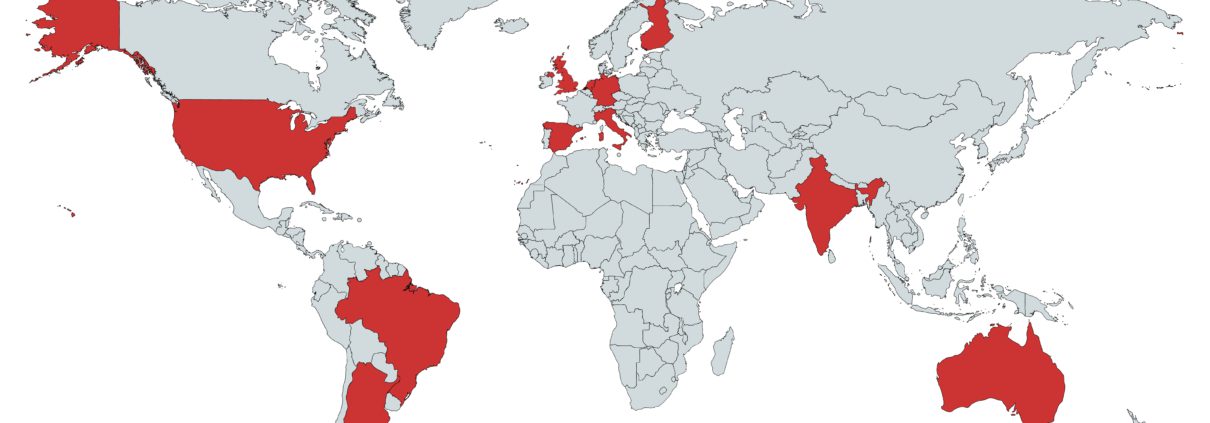The Future of the Gig Economy: Choice or Necessity

To work from home, with a flexible schedule, autonomy, and career development! Thanks to the gig economy. At first stance, these expressions appeal to workers seeking a job. But in reality, how do workers experience work in the digital world compared to the physical world?
The gig economy can bring flexibility, autonomy, and career development, but also precarity and inequality. The gig economy is constantly growing nowadays. This trend is due to the competitive environment and rapid technological growth. Additionally, the Covid-19 pandemic has taught us to think about the gig economy as a replacement for physical work. In such a context, gig economy businesses are becoming commonplace. In other words, we are facing the new normal of work, and this new form is not a choice but a necessity.
The gig economy is the economic system that workers and clients come together in the virtual world (Meijerink & Keegan, 2019).
The gig economy can create equality. It means it can offer digital space to individuals regardless of demographics. It yet seems to exclude individuals due to technological infrastructure.
In the following paragraphs, we first review the positive impacts and the adverse outcomes of the gig economy. Next, we come to know how to thrive in the gig economy.
Positive Impacts of Gig Economy
In the digital world, freelancers and entrepreneurs can show their skills and knowledge in the gig economy. They can also compete with large businesses regardless of demographics. From this perspective, the gig economy provides opportunities for inclusion. Digital platforms such as Upwork.com or freelancer.com enable individuals to work, regardless of age, gender, race, disability, or experiences. Thus, the gig economy allows entrepreneurs with diverse backgrounds to be present in the new market.
Are the provided opportunities equal among all entrepreneurs? Or other drivers such as social, technological, and political factors can influence this inclusion? These factors are beyond the power of platforms, clients, and workers as the three main actors of such an economy.
Anytime, Anywhere, Any client?

Flexibility is a distinctive characteristic of the gig economy. Gig economy work can bring flexibility for gig workers in terms of time and location. In other words, workers can adjust the time and place to work based on their preferences. It gives them more autonomy and freedom.
Yet, flexibility at work might raise some consequences. One issue is whether flexibility allows workers to decide where and when to work. Or can they freely choose clients? If they are not flexible in selecting the clients, they have to accept the available circumstances. Otherwise, they may encounter unavailability of work.
Flexibility can also bring procrastination and lack of motivation for workers. It means we, as humans, are more structured and organized in the physical workplace as we have a fixed timeframe to follow.
Adverse Outcomes of Gig Economy
The gig economy can bring both precarity and structural inequality. Precarity refers to the health vulnerabilities of the gig workers. It means the gig workers face a lack of health insurance and income insecurity. But structural inequality means the challenges of design and operation in digital platforms.
According to Heeks (2017), structural inequality includes power and information asymmetry. The gig economy can bring a new form of insecurity for workers and inequality of structures.
Power and information asymmetry as the adverse outcomes of the gig economy will discuss as follows:
Power asymmetry means power is not equally distributed among platforms, clients, and workers. Additionally, the power asymmetry exists not only between workers and clients but also among the workers.
For instance, some workers depend on the platform’s income for their living costs. They may experience precarity and dissatisfaction. Yet, some consider income from digital platforms as supplemental income. They have more power to negotiate their rights. Thus, the good economic condition of workers can empower them to bargain for their rights.
Information asymmetry is another negative outcome of the gig economy. To be more specific, information is not equally shared among actors. For instance, in creating an account, workers need to present all personal information. While they do not even know the name of the client they seek to work.
Workers should have the right to know about the company they want to invest their time in. In other words, sharing information should be reciprocal between workers and clients.
It can raise an issue of whether the personal data of workers are just for creating an account. Or the data are collected for other commercial purposes. Privacy issues in the gig economy need significant consideration. Particularly in developing countries due to the absence of the GDPR.
Thriving the Gig Economy
There are many opportunities and challenges in the gig economy among various actors. To improve the nature of the gig economy, we should recognize the key actors. By understanding their responsibilities and powers, we can thrive in such an economy.
We will look at the roles of platforms, clients, workers, and governments as main actors in the gig economy. By considering their powers and challenges, we realize how to improve the future of the gig economy.
Platform Role: Inclusion or Isolation?
Platforms bridge workers and clients. There are structural inequalities in the platforms such as workers and clients not being well treated there. The structural and technological design of the gig economy platforms can isolate workers.
Many studies show that a new form of exploitation is emerging in the gig economy. For instance, gig workers compete against each other on price. In other words, exploitation is not just from the client. But gig workers exploit themselves through competing to succeed in their bid. It seems it is due to the structure of the platforms. This self-exploitation could aggravate during economic crises such as Convid-19. At the time that competition among gig workers exists due to economic conditions and the lockdown of businesses.
What does the Algorithm Say?
Algorithmic control can also bring advantages and disadvantages to the platform. To be more specific, algorithmic control can bring task variety and flexibility to workers. Yet, those with low skills and reputation have less chance to be selected due to the algorithmic mechanism. In general, platforms can benefit workers with inclusion and flexibility. Yet, we need to consider if those can compensate for inequality emerging from the gig economy. We should direct the future of the gig economy toward taking advantage of inclusion and flexibility. Yet, minimizing structural inequality on the gig economy platforms should seriously be considered.
Platforms can reduce inequality by introducing and implementing regulations among workers and clients. A concern is how platforms can harmonize these regulations around the globe. In other words, implementing rules in developed and developing countries could be challenging because they differ based on the norm, culture, politics, and economy of the target labor market.
There is competition among different platforms. Thus, we could expect they equally protect the rights of both clients and workers for the sake of their sustainable success.
Workers as the main vulnerable Actor in the Gig Economy

Workers constitute the vulnerable segment of digital platforms. So, why is the gig economy rapidly growing despite the low trust nature of it among workers? There is a host of unawareness about the regulation and its implementation among workers. The digital divide is a factor contributing to the unawareness among workers, mainly in developing countries.
Raising awareness among workers can protect their rights. One way is to form an informal group. The informal group can contribute to raising awareness and mobility among gig workers.
Informal groups and networking allow workers to communicate with each other and avoid isolation in the gig economy. It can cause social cohesion among workers. By sharing information and personal experience through informal groups, workers can feel secure. It can also raise consciousness about their rights.
Freedom and flexibility in the gig economy do not necessarily bring better working conditions. These factors can create precarity that can cause a lack of sleep and stress among workers. Flexibility and autonomy can also cause procrastination and lack of motivation among workers. It is because of the lack of a structured timeframe.
Clients with the Bargaining Power

Clients enjoy the gig economy through lying in a pool of workers willing to work with low wages. It can provide bargaining power for clients. To be more specific, with more power, clients can exploit workers. It means clients compensate workers’ efforts with low wages. Moreover, the power asymmetry is more significant during crises such as Covid-19. Intense competition exists due to financial conditions and the lockdown of businesses.
There is a communications gap between workers and clients in the gig economy. Clients should also be accountable to workers. In other words, workers should have the same rights as in the physical world.
Additionally, clients should give all related information to the workers on the onboarding phase. Through agreement, workers can get familiar with their roles, responsibility, rights, and guidelines. This transparency builds trust among workers and secures both workers and clients.
Are labor agreements well respected by employers and governments in the physical world? If not, how can we expect its implementation in the virtual platforms, particularly in developing countries?
Quality or Quantity: Which One Matters?
The gig economy can improve employment. Thus, governments welcome the gig economy because it can bring economic growth. Government hospitality to the gig economy is more tangible during the pandemic and with the lockdown of businesses. Hence, Governments intend to accept this economy to increase the number of jobs to solve the unemployment problems.
The question posed here is whether governments think about the quality of work while seeking the quantity of created jobs. It means the quality of work among the gig workers needs more scrutiny as well.
Studies have shown that the quality of work depends on autonomy, income, and other social and environmental factors. These factors include education, healthcare, and regulation. Thus, applying decent work depends on the broader social, political, and economic context. Yet, these factors are not under the control of platforms, workers, or clients.
Considering the quality of work, governments should introduce new labor regulations. These regulations should cover wages and working conditions to reduce inequality in the gig economy.
Stewart and Stanford (2017) provide practical recommendations for regulating the gig economy. Revising the existing laws and introducing new regulations are some of the interventions.
The issue raised here is whether all governments across the world can implement these regulations. Yet, shortages in conforming to existing regulations still exist in some countries.
The Covid-19 pandemic has taught us that people who are unwilling to embrace digital change may experience exclusion. With technological advancement, we are transitioning to a new form of work. We should manage this transition to happen in an inclusive, fair, and sustainable manner. In other words, power should equalize among all actors. The potential benefits of the gig economy are indisputable. Providing a safe ecosystem needs amending existing legislation and introducing new regulations. Yet, it is too simplistic to think applying these regulations can happen overnight and without effort.
Will the future of the gig economy reduce precarity and structural inequality? Will the trend still maintain inclusion, flexibility, and autonomy?
Community

Congratulations on reaching the end!
Check out our podcast Impact Talks, where you can listen to high-profile experts from various backgrounds!
Join our Facebook Group Community with over 4,700 entrepreneurs, innovators, and creators by Startup Funding Event, where you get access to free live training, daily Q&As, design templates to get your business started, and support from the SFE team. Join here!




Leave a Reply
Want to join the discussion?Feel free to contribute!